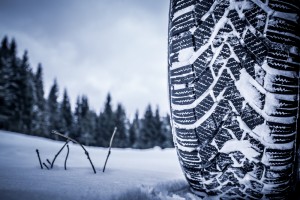 There is no way around it: winter is coming. And with this exceptionally warm and beautiful fall we’ve been experiencing, winter is going to sneak up and most likely catch some of us off guard! One questions many people have about preparing their car for winter is when they should be switching to winter tires?
There is no way around it: winter is coming. And with this exceptionally warm and beautiful fall we’ve been experiencing, winter is going to sneak up and most likely catch some of us off guard! One questions many people have about preparing their car for winter is when they should be switching to winter tires?
Before we answer the questions of “when” you should switch to your winter tires, let’s examine the question of “why” you should switch to winter tires. Snow, ice, and cold is the reality for drivers in Canada, and winter tires help us battle Old Man Winter’s forces better than even all-season tires. But, how much of a difference could they possibly make? For a thorough list of winter tires benefits, check out this Globe and Mail article, but some of the main highlights include:
1. Winter tires are designed and manufactured to stay soft during the cold. Regular tires will stiffen, giving you less traction, but winter tires remain soft, giving you better traction and more control over the handling of your car.
2. With improved traction, you’ll have improved stopping distance, which makes a huge difference in the safety and reliability of your braking, particularly on icy and snowy roads. Studies have shown that your stopping distance is improved by 35% with snow tires.
3. Deeper treads help whisk snow and water away and to better grip snow.
4. Their width is normally thinner than regular tires, letting your car cut through snow and slush better, which helps reduce your risk of hydroplaning or fishtailing.
Your snow tires’ effectiveness kicks in at about 7 degrees Celsius. As November comes to a close and the temperatures begin to reach consistently colder temperatures of 7 degrees or lower, it’ll be time to put those winter tires on!

